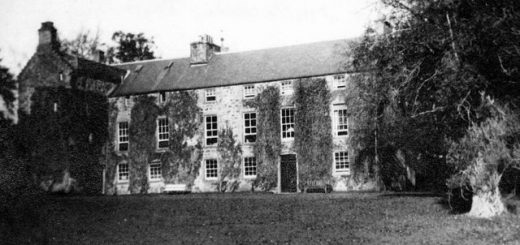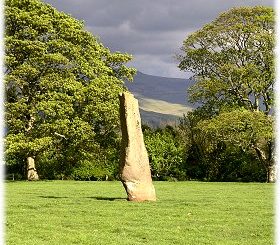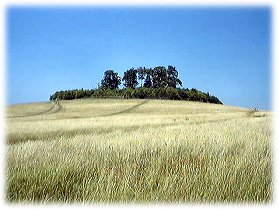Cader Idris
This holy mountain has a rock seat called ‘The Seat of Prince Idris’. It is said that anyone who spends the night alone on the mountain will either die, become insane or become a poet.
The seat of Prince Idris is also known as the Chair of Idris, and was named after a giant who was said to view the heavens from this lofty point.
Cader Idris (the Chair or seat of Arthur) is the second most popular mountain in Wales, and it’s highest point in the middle of the ridge is 2,927 feet. Idris is described as a giant, but this is probably meant to reflect the measure of a man’s mind rather than his physical stature. He is sometimes connected to King Arthur, but it’s more probable that the mountainous region was the home of a remarkable, wise and enlightenend man who in recent times has become confused with Arthurian Legend. The word ‘seat’ probably depicts a place of abode rather than an actual chair, and attempts to identify a place where a giant used to sit on the mountain is probably detracting from the real legends of the mountain, that are now all but lost in time.
The poet Mrs Hemans wrote ‘The Rock of Cader Idris’ (see below). Although obsure, it is valuable in that it records the belief (story) that to spend a night on the mountain will either kill you, make you insane or tun you in to a bard.
The Rock of Cader Idris
[It is an old tradition of the Welsh bards, that on the summit of the mountain Cader Idris is an excavation resembling a couch; and that whoever should pass a night in that hollow, would be found in the morning either dead, in a state of frenzy, or endowed with the highest poetical inspiration.]
I LAY on that rock where the storms have their dwelling,
The birthplace of phantoms, the home of the oloud;
Around it for ever deep music is swelling,
The voice of the mountain-wind, solemn and loud.
‘Twas a midnight of shadows all fitfully streaming,
Of wild waves and breezes, that mingled their moan;
Of dim shrouded stars, as from gulfs faintly gleaming;
And I met the dread gloom of its grandeur alone.
I lay there in silence–a spirit came o’er me;
Man’s tongue hath no language to speak what I saw:
Things glorious, unearthly, pass’d floating before me,
And my heart almost fainted with rapture and awe.
I view’d the dread beings around us that hover,
Though veil’d by the mists of mortality’s breath;
And I call’d upon darkness the vision to cover,
For a strife was within me of madness and death.
I saw them–the powers of the wind and the ocean,
The rush of whose pinion bears onward the storms;
Like the sweep of the white-rolling wave was their motion,
I felt their dim presence,–but knew not their forms !
I saw them–the mighty of ages departed–
The dead were around me that night on the hill:
From their eyes, as they pass’d, a cold radiance they darted,–
There was light on my soul, but my heart’s blood was chill.
I saw what man looks on, and dies–but my spirit
Was strong, and triumphantly lived through that hour;
And, as from the grave, I awoke to inherit
A flame all immortal, a voice, and a power !
Day burst on that rock with the purple cloud crested,
And high Cader Idris rejoiced in the sun;–
But O ! what new glory all nature invested,
When the sense which gives soul to her beauty was won !
“The Rock of Cader Idris” by Felicia Hemans (1793 – 1835)
This Edition: Hemans, Felicia Dorothea. The Poetical Works of Felicia Dorothea Hemans London: Oxford University Press, 1914. pp. 176-177.
The belief or good fairies and elves in the caves of Cader Idris still exists today and strange light phenomena is also associated with the mountain.
Directions: The mountain lies in the Southern end of Snowdonia National Park, to the South of Dolgellau





Re: Cader Idris
There is the story of the giant Idris, who dwelt upon Cader Idris, and who found no less a number than three troublesome pebbles in his shoe as he was out walking one day, and who tossed them down where they lie on the road from Dolgelley to Machynlleth, three bulky crags.
British Goblins (1881) by Wirt Sykes